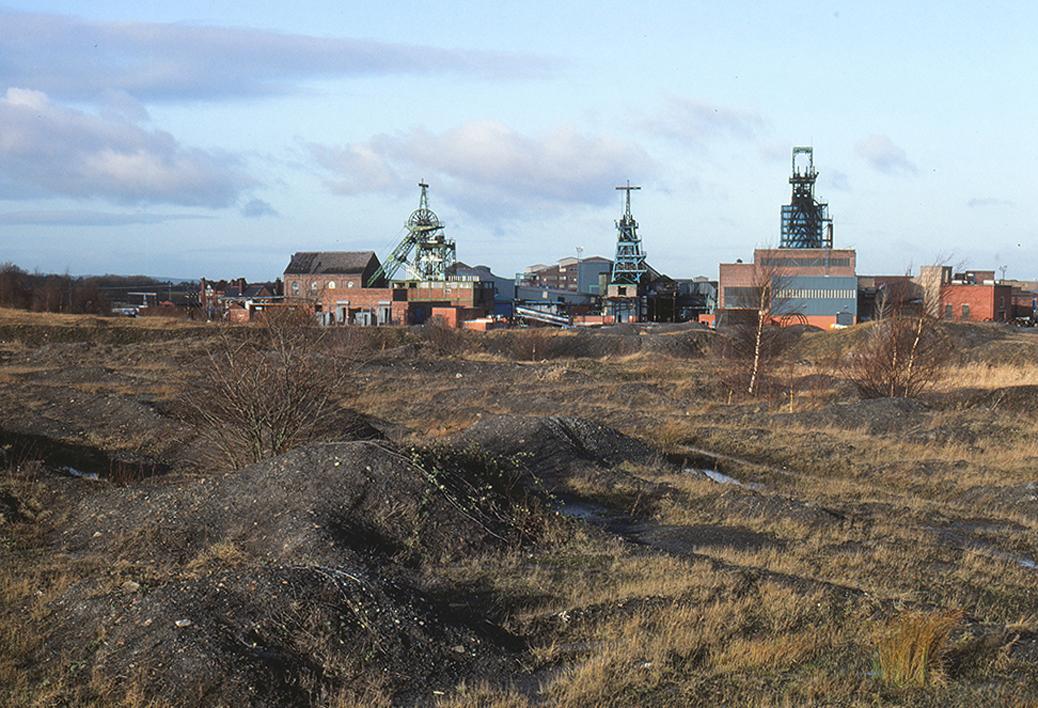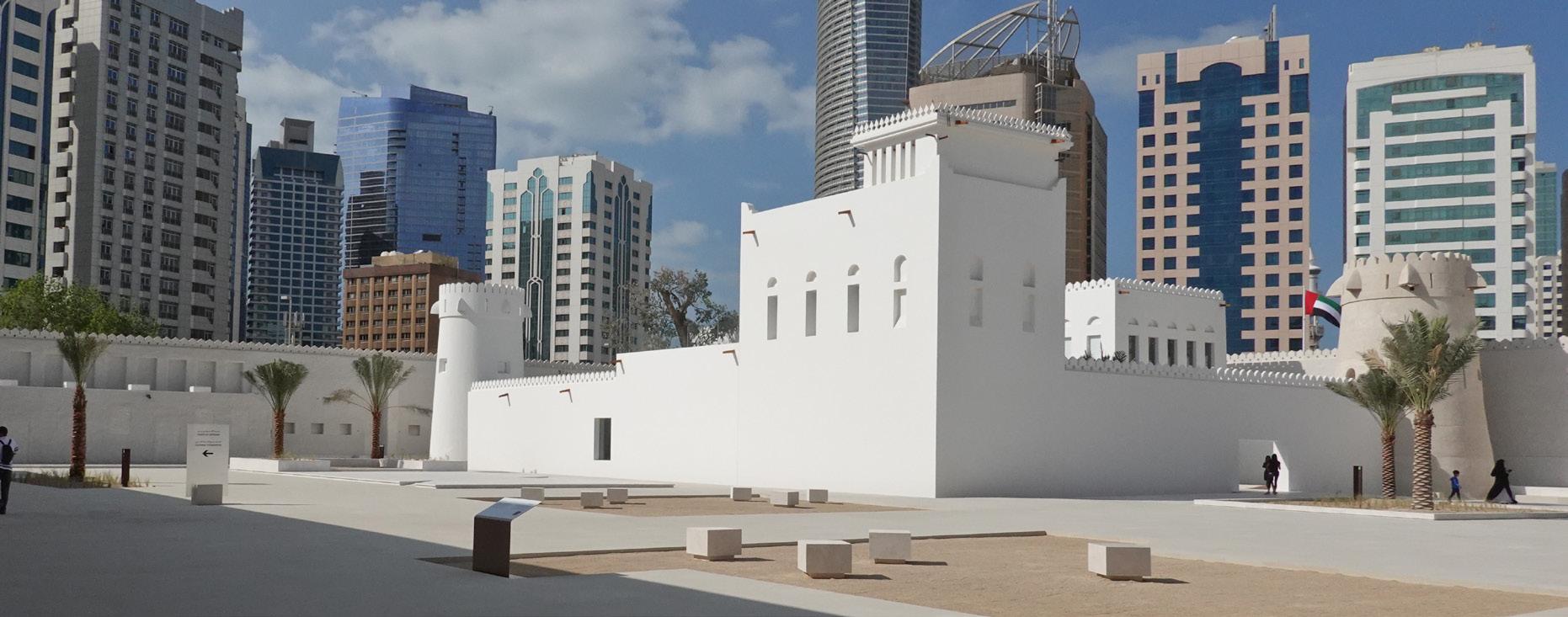
3 minute read
Qasr Al Hosn
Qasr Al Hosn Qasr Al Hosn in the centre of the city of Abu Dhabi overlooked by a landscape of towers and skyscrapers. ROBERT GALLOWAY LRPS.
Qasr Al Hosn, in the centre of the city of Abu Dhabi in the United Arab Emirates, comprises an inner fort with historic watchtower and outer palace. It contains the oldest surviving stone building on Abu Dhabi island, the historic watchtower built c1795 and from this “little acorn” the mighty city of Abu Dhabi has grown. Qasr Al Hosn was opened to the public in December 2018, as a museum of Abu Dhabi history, after extensive restoration and reconstruction. The Bani Yas people, who later came to populate Abu Dhabi, had prior to the 19th. Century been centred around the Liwa oases, about 150km inland and made only passing visits to Abu Dhabi island. During the 18th Century they decided to form a permanent settlement at Abu Dhabi where a good freshwater spring had been found. In 1795 Sheikh Shakhbut bin Dhiyab Al Nahyan moved his centre of rule to Abu Dhabi and a protective watchtower and fort were built. The building material was coral stone from the sea bed which was rendered with a calciferous mortar, so that with bits of sea shell in the mortar, the building looked bright white. During the 1940s the outer palace was constructed and developed by Sheikh Shakhbut bin Sultan Al Nahyan, both as family living quarters and as administrative centre. This work was financed by revenues from concessions to search for oil. The historic fort was enclosed within the walls of the outer palace. In 1966 Sheikh Zayed bin Sultan Al Nahyan succeeded as ruler of Abu Dhabi and, with the formation of the United Arab Emirates in 1971 he also became President of the U.A.E.. In 1978 Sheikh Zayed bin Sultan Al Nahyan decided that Qasr Al Hosn should be restored in honour of his ancestors to its appearance in his grandfather’s days (Sheikh Zayed the first, mid19th century). During conservation work in the 1980s the historic (North East) watchtower was given the support of an inner concrete liner while the outer wall surface retained its traditional colour. Radiocarbon dating of two coral stones from near the base of the tower indicated that they dated from 1795 and 1805. In the 1980s work much of the inner fort was rebuilt in concrete and painted white to resemble the original mortar. Combining non-porous concrete with porous coral stone lead to problems with dampness trapped in walls, from both rising damp and condensation even in a desert land. This delayed completion of the project which continued all-round the outer palace and well into the early 2000s. Rooms used by the Sheikh and his family in the upper level of the South wing of the Palace were decorated with carved plaster bas-reliefs in the 1940s construction and most have survived. To fulfil its new role as Museum of Abu Dhabi history, Qasr Al Hosn now houses a wide range of displays of objects, old photographs, audio visual presentations and explanatory texts (in English). One object in particular caught my eye, the jambiyya (curved dagger) showing magnificent craftsmanship in gold. Photographs were taken hand held with a Sony RX100VI pocket camera, comprising 20MP 1 inch sensor with Zeiss Sonnar zoom lens 2.8-4.5/9.0- 72mm (24-200, 35mm equivalent) set to ISO400 or 800, most at wide angle, f/8, with auto exposure from 1/800 to 1/5000 s outdoors and 1/10s indoors. ROBERT GALLOWAY LRPS. Figure 1. The Watchtower c1795, at the North East corner of the Fort, is the oldest building on Abu Dhabi island, and is viewed here from inside the fort.
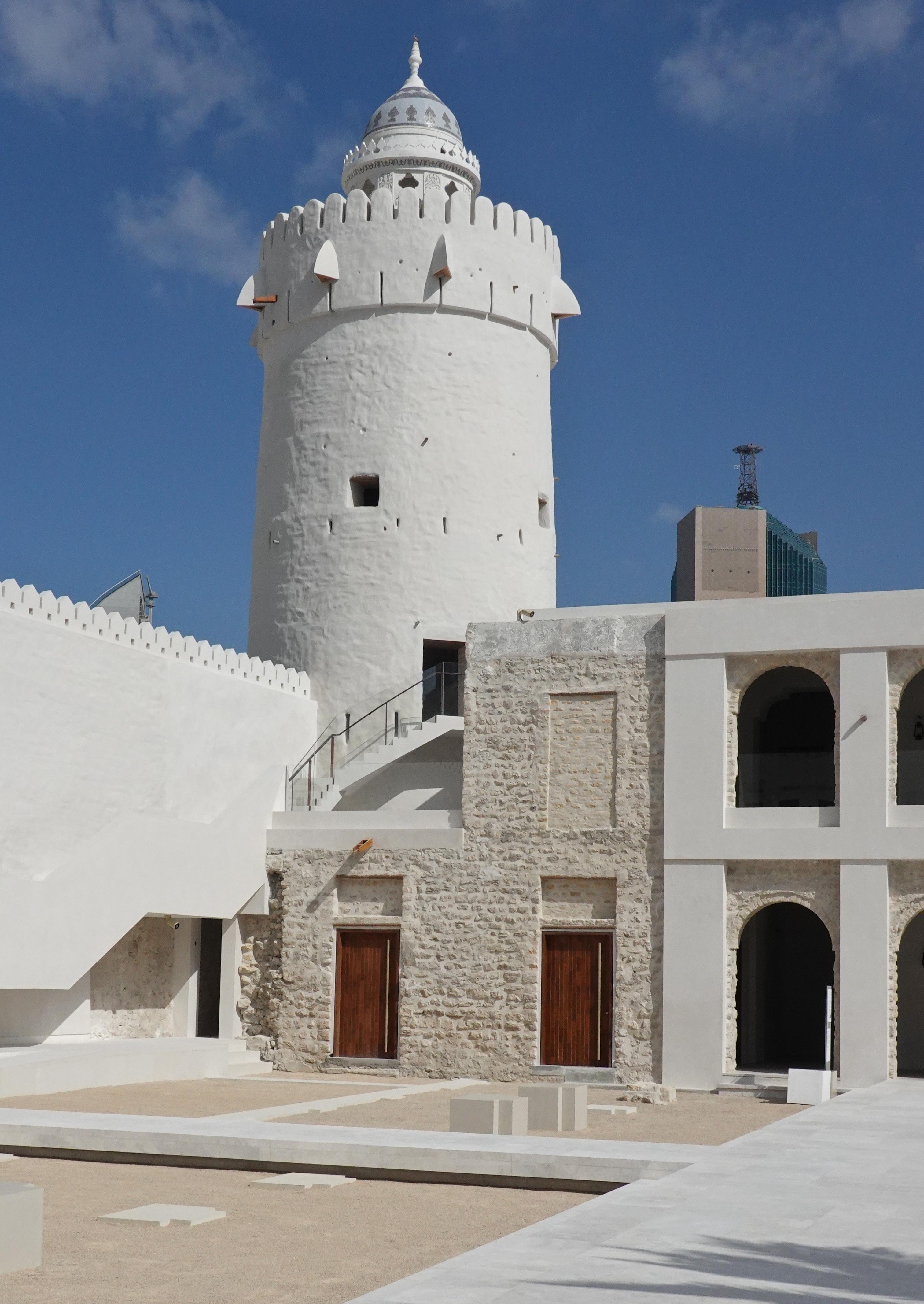
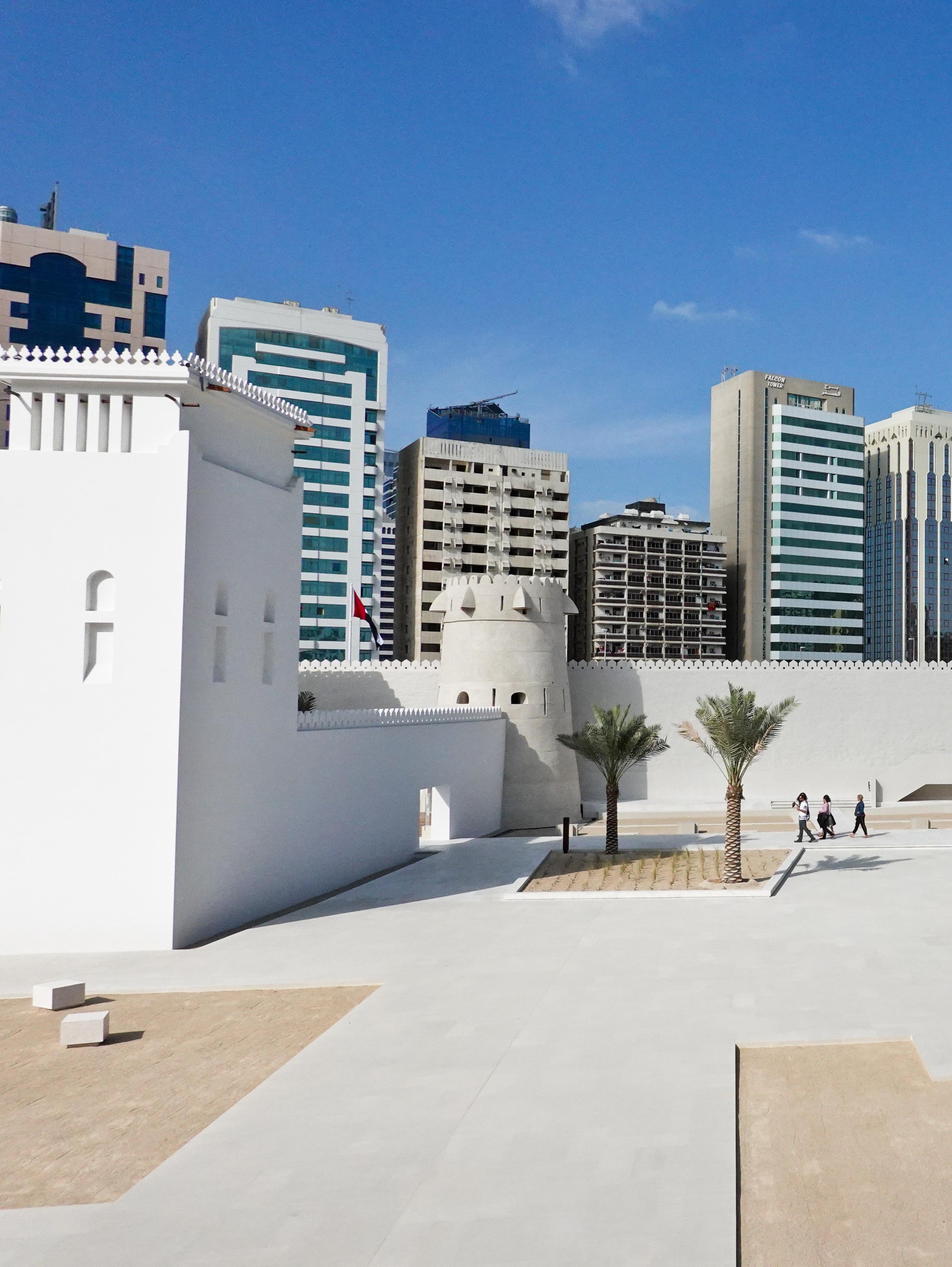
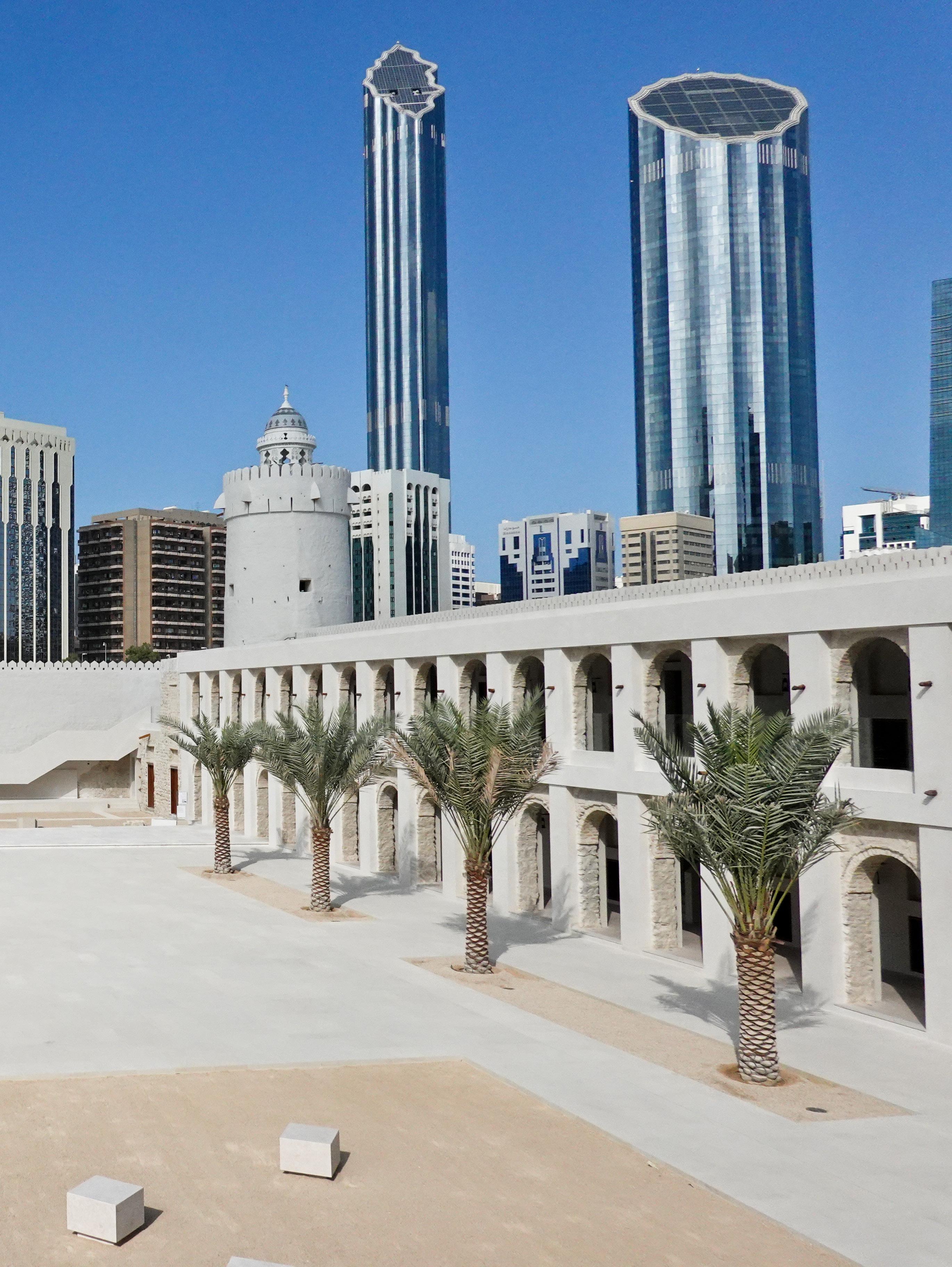
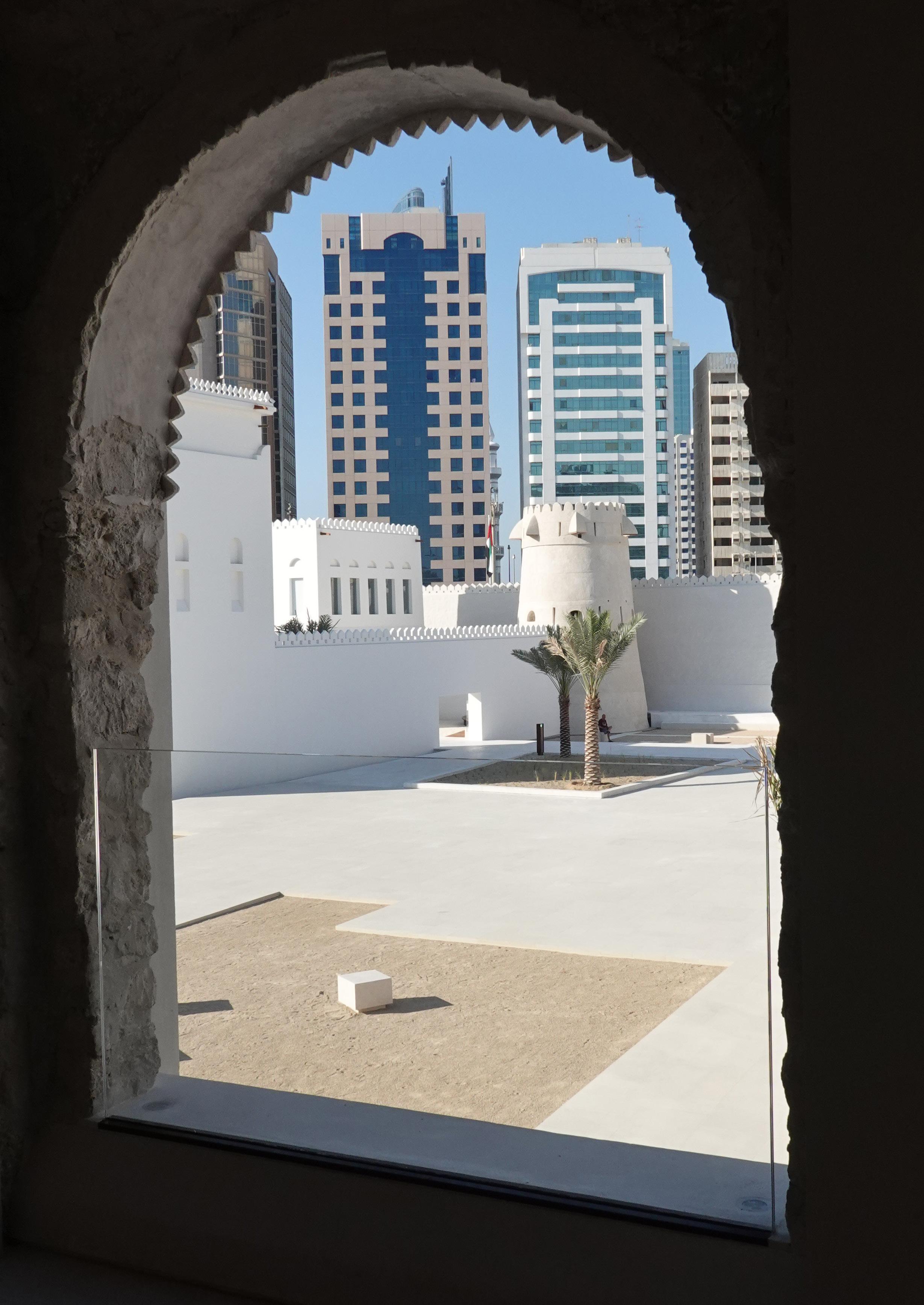
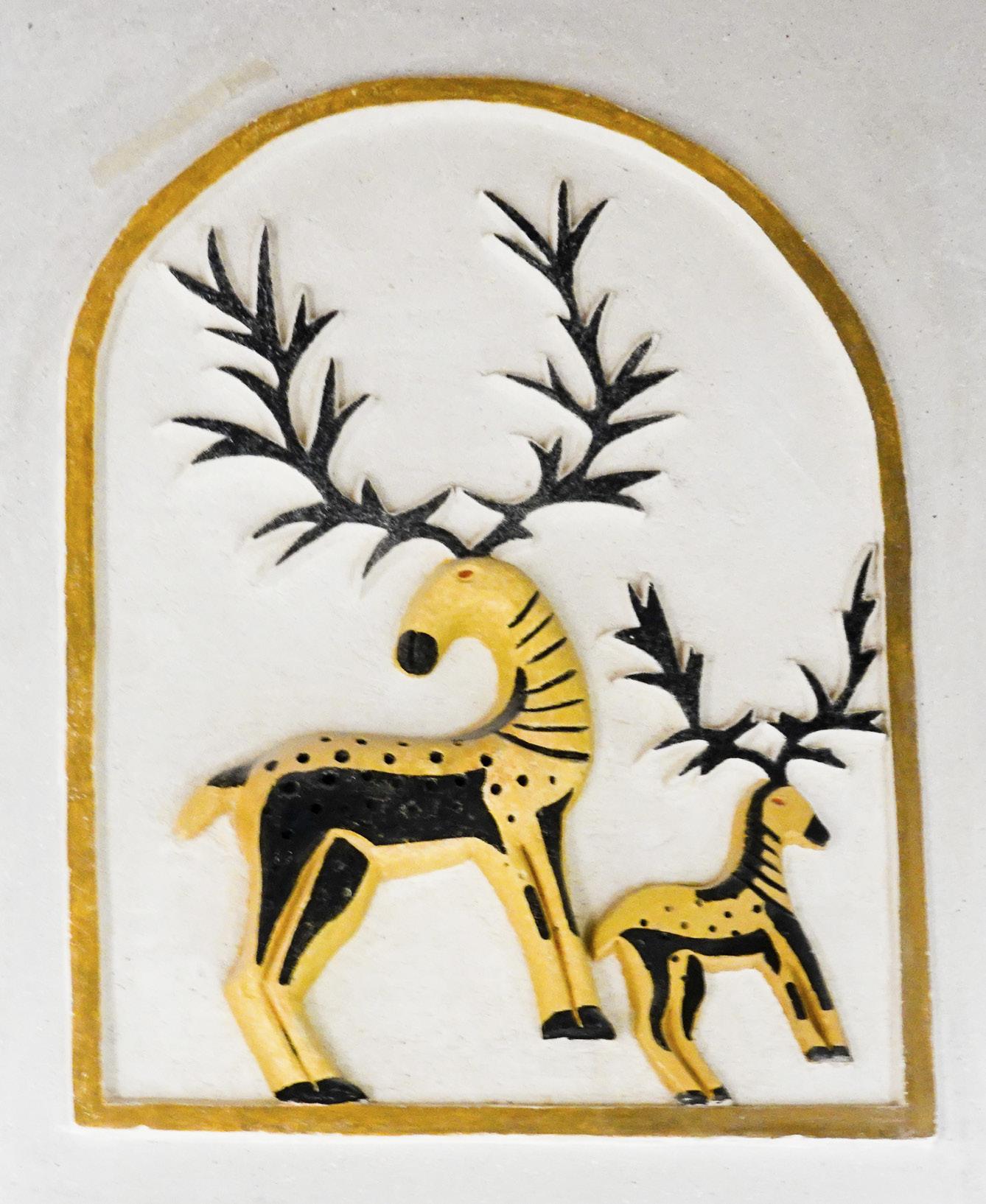
Figure 5. An example of a carved plaster decorative bas-relief in one of the upper rooms in the South wing occupied by the family of Sheikh Shakhbut bin Sultan Al Nahyan and dating from the 1940s construction of the Palace. It is interesting to note that the antlers portrayed are those of a Red deer which is not native to this part of the world. The native deer, Onyx, Gazelle, do not have branching antlers.
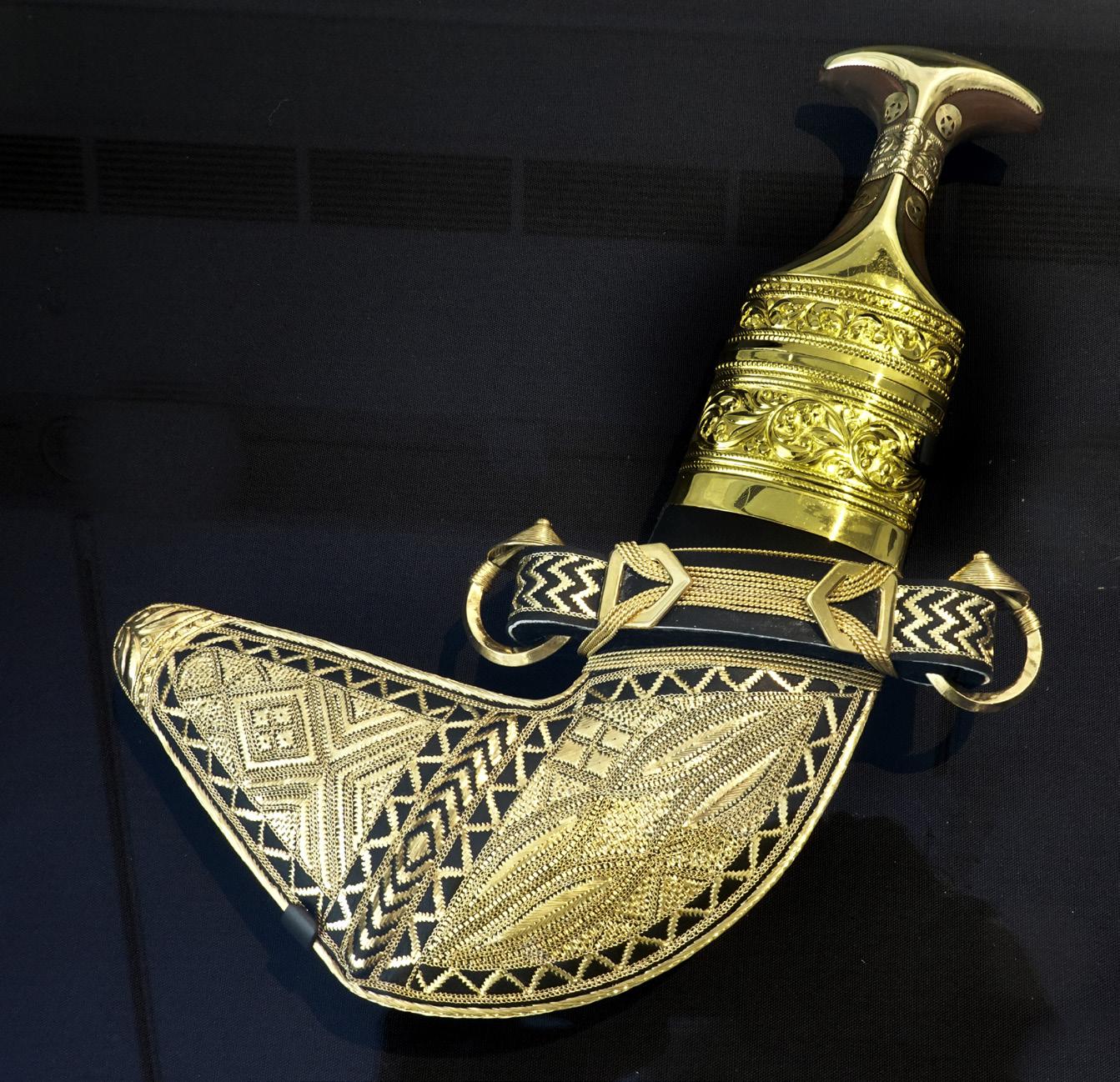
Figure 6. Jambiyya (curved dagger) showing very fine craftsmanship in gold and which belonged to Sheikh Shakhbut bin Sultan Al Nahyan, ruler of Abu Dhabi from 1928 to 1966.


